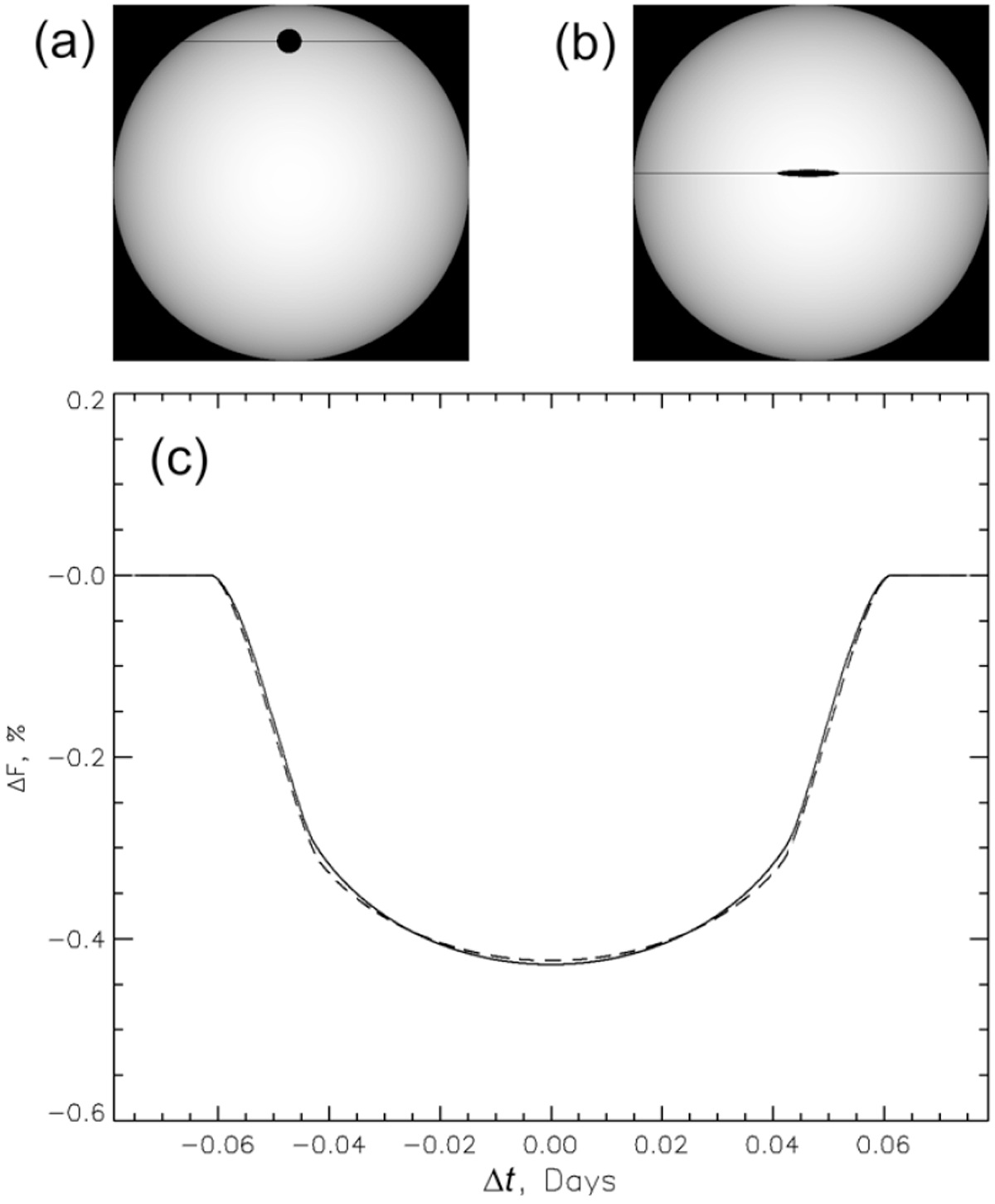Fig. 1

Example of TLC proximity for different transit geometries. Panel a: model of a spherical object with β = 0.796 and ap = 0.032 au; panel b: model of an elongated disk-type shape of the transiting shadow (a thin disk with an increased radius of 2.59 times of that in the case of mode (a) and tilt of 6.38 deg.), keeping the same depth of TLC minimum, with β = 0.054 and ap = 0.053 au; panelc: combination of synthetic TLCs calculated for the models (a) (dashed line) and (b) (solid line). The orbital period and stellar parameters are the same in both models. Here, ΔF is the decrease of the radiation flux caused by the transiting object. The abscissa parameter Δt is the time relative to the predicted transit mid-time.
Current usage metrics show cumulative count of Article Views (full-text article views including HTML views, PDF and ePub downloads, according to the available data) and Abstracts Views on Vision4Press platform.
Data correspond to usage on the plateform after 2015. The current usage metrics is available 48-96 hours after online publication and is updated daily on week days.
Initial download of the metrics may take a while.


